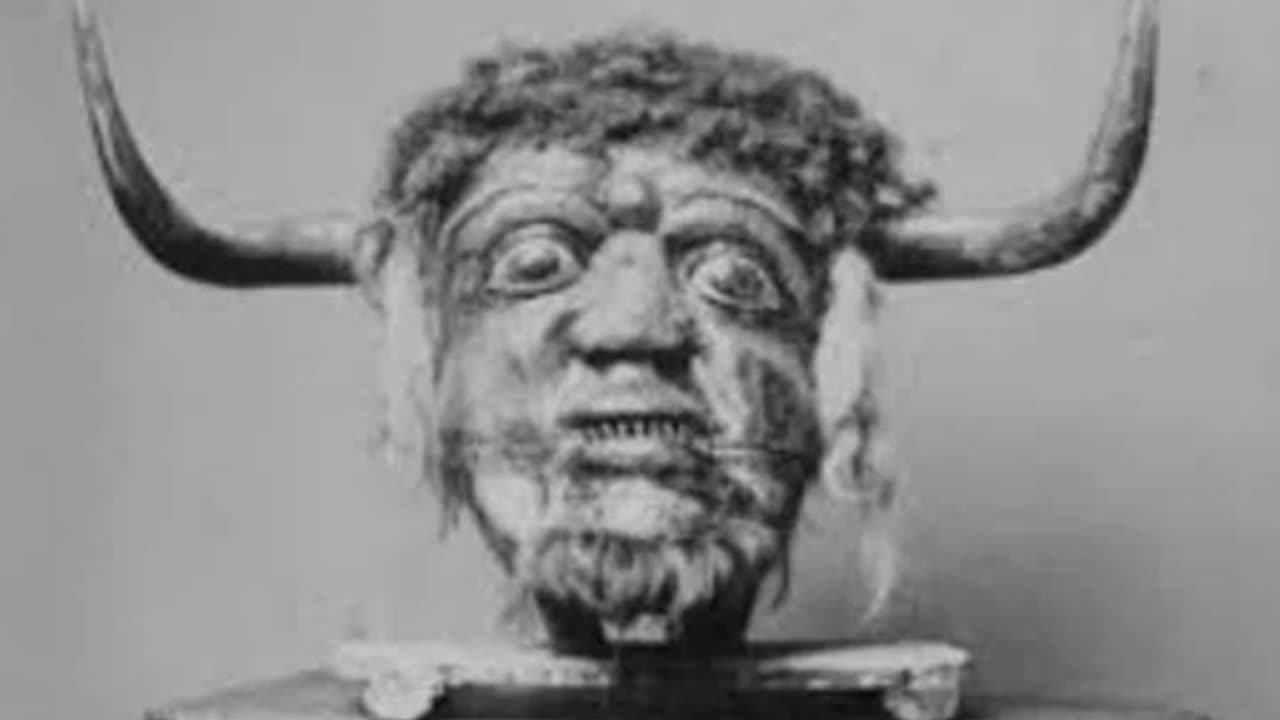Premium Only Content

The Dorset Ooser
https://solitarypaganism.com/mythology/the-dorset-ooser/
The Ooser was written about in Doreen Valiente’s ABC’s of Witchcraft and in Margaret Murray’s The God of the Witches.
It was a hollow mask made of painted wood, trimmed with fur, and crowned with bull’s horns.
The lower jaw of the Ooser was movable, and it possessed a strange convex boss on its forehead.
Valiente claims that this boss was representative of the third eye, a seat of psychic power.
The original Ooser mask disappeared in 1897, though a modern replica, made in 1975 by John Byfleet, is held in the Dorset County Museum, where it is taken out as a part of a procession of Morris dancers atop the Cerne Abbas giant on May Day and St George’s Day, though some records indicate that in the 19th century it was paraded at Christmas instead.
It is unknown when the original mask was made, but appeared to be in a tradition of making animal and grotesque masks to be worn in procession; in the 7th century book Liber Poenitentialis by the then Archbishop of Canterbury, Theodore, he stated:
“whoever at the kalends of January goes about as a stag or bull; that is, making himself into a wild animal and dressing in the skin of a herd animal, and putting on the heads of beast, those who in such wise transform themselves into the appearance of a wild animal, penance for three years because this is devilish”.
The etymology of the word “ooser” is of special interest to we Indiana witches, as we Indiana natives are labeled by the strange moniker “hoosier”, which is a variation of ooser.
The Indiana Historian Jacob Piatt Dunn, Jr. found that the word, “hoosier” was used, in the south, to refer to woodsmen and rough hill people.
Mr Piatt traced this word back to England and the word “hoozer,” meaning anything large in the Cumberland dialect.
This was derived from the Anglo-Saxon “hoo” meaning high or hill.
Mr Pratt suggests that this word was brought from England and applied to people who lived in the southern mountains.
This word then migrated north to the southern hills of Indiana.
“Hoosier” is still sometimes used in the southern United States to characterize someone who is less then sophisticated, or more bluntly, an “ignorant rustic.”
Thus, a hoosier is a Pagan!
-
 9:21
9:21
asolitarypagan.com
1 year agoMaking Herbal Salves
1.79K -
 4:41:31
4:41:31
Right Side Broadcasting Network
23 hours agoLIVE REPLAY: RFK Jr. Testifies at Senate Confirmation Hearing for HHS Secretary - 1/29/25
234K281 -
 28:22
28:22
Stephen Gardner
2 hours ago🔥Sen. Lindsay Graham BETRAYS TRUMP, calls for investigation!
22.8K37 -
 1:00:33
1:00:33
The Dan Bongino Show
5 hours agoTruth Returns To The White House Press Room (Ep. 2411) - 01/29/2025
604K1.17K -
 1:01:33
1:01:33
Grant Stinchfield
2 hours ago $3.44 earnedVague Details: An Effort to Avoid Panic Over Drones & "The Research"
39.3K9 -
 LIVE
LIVE
Barry Cunningham
15 hours agoWATCH LIVE: RFK JR. CONFIRMATION HEARING! ROBERT F KENNEDY JR TESTIFIES BEFORE SENATE
1,862 watching -
 LIVE
LIVE
The Dana Show with Dana Loesch
2 hours agoTHE TRUTH ABOUT TRUMP'S FREEZE | The Dana Show LIVE On Rumble!
635 watching -
 58:59
58:59
The Rubin Report
4 hours agoWatch Stephen Miller Destroy CNN Host’s Narrative with Facts in Only 2 Minutes
64.1K40 -
 4:09:28
4:09:28
Benny Johnson
5 hours ago🚨Robert F. Kennedy Jr. Confirmation LIVE Right NOW | Fauci and Big Pharma PANIC Over RFK!
163K265 -
 2:03:48
2:03:48
LFA TV
19 hours agoRFK CONFIRMATION & MORE! | LIVE FROM AMERICA 1.29.25 11am
62.7K18